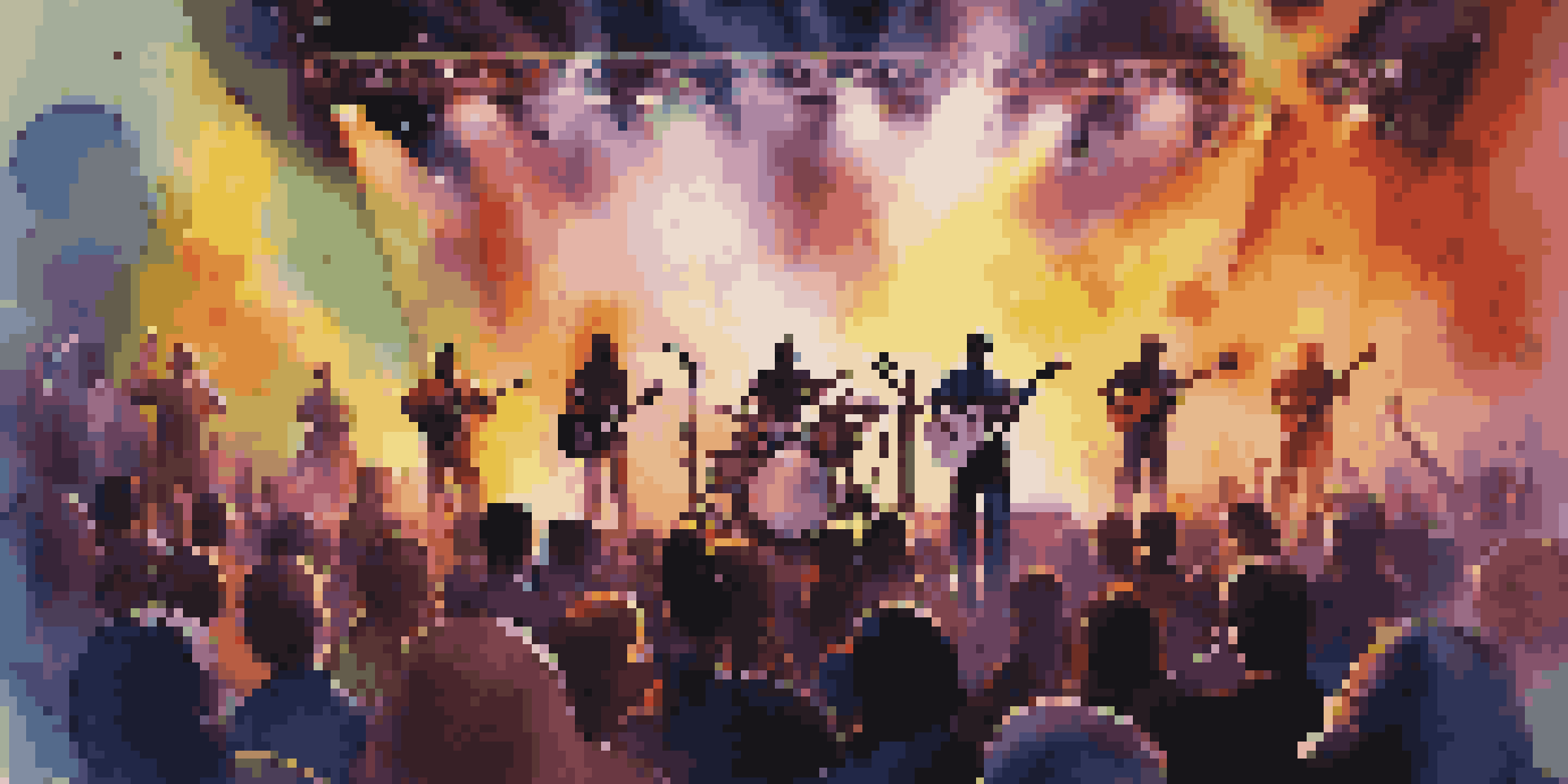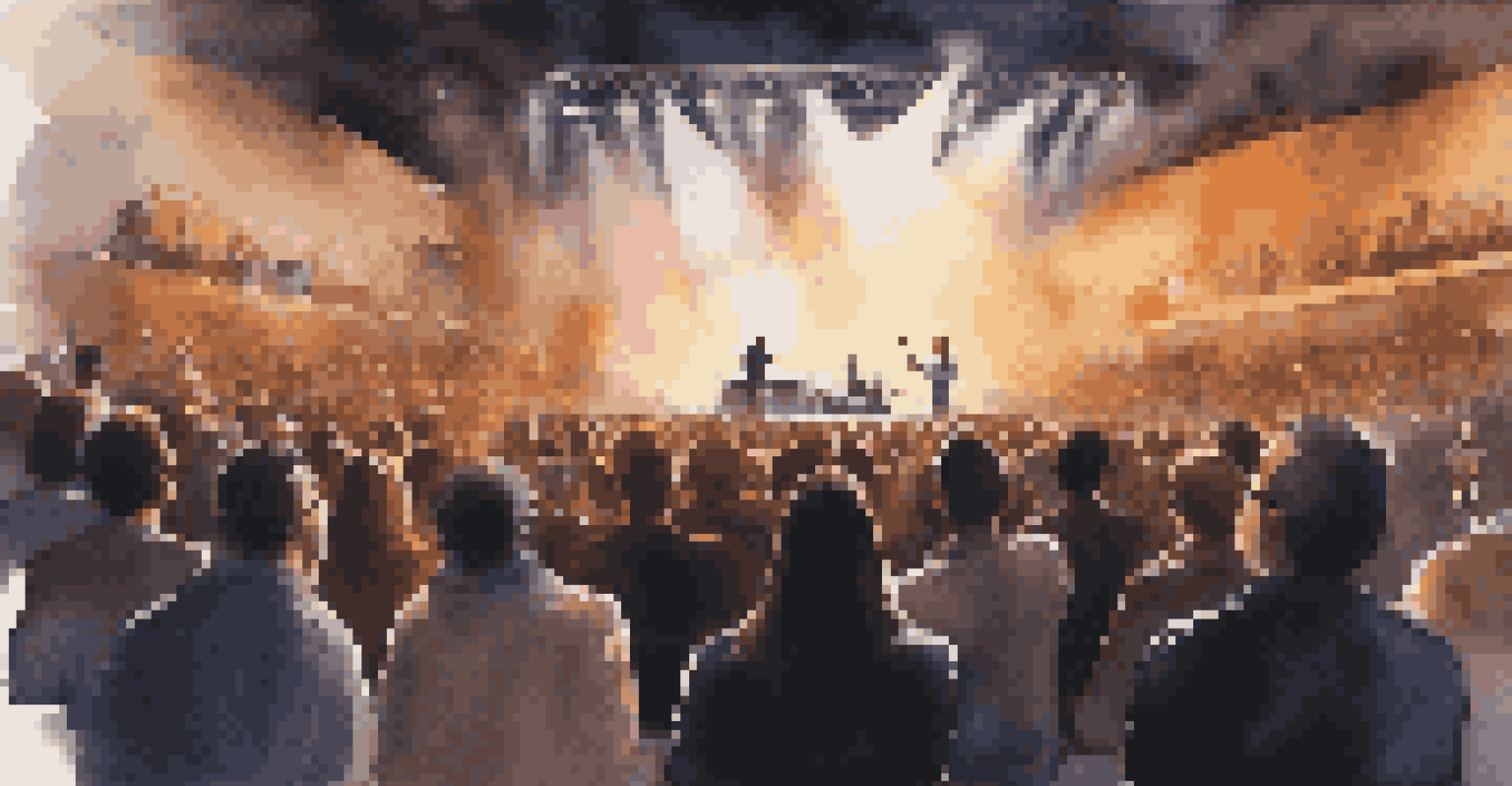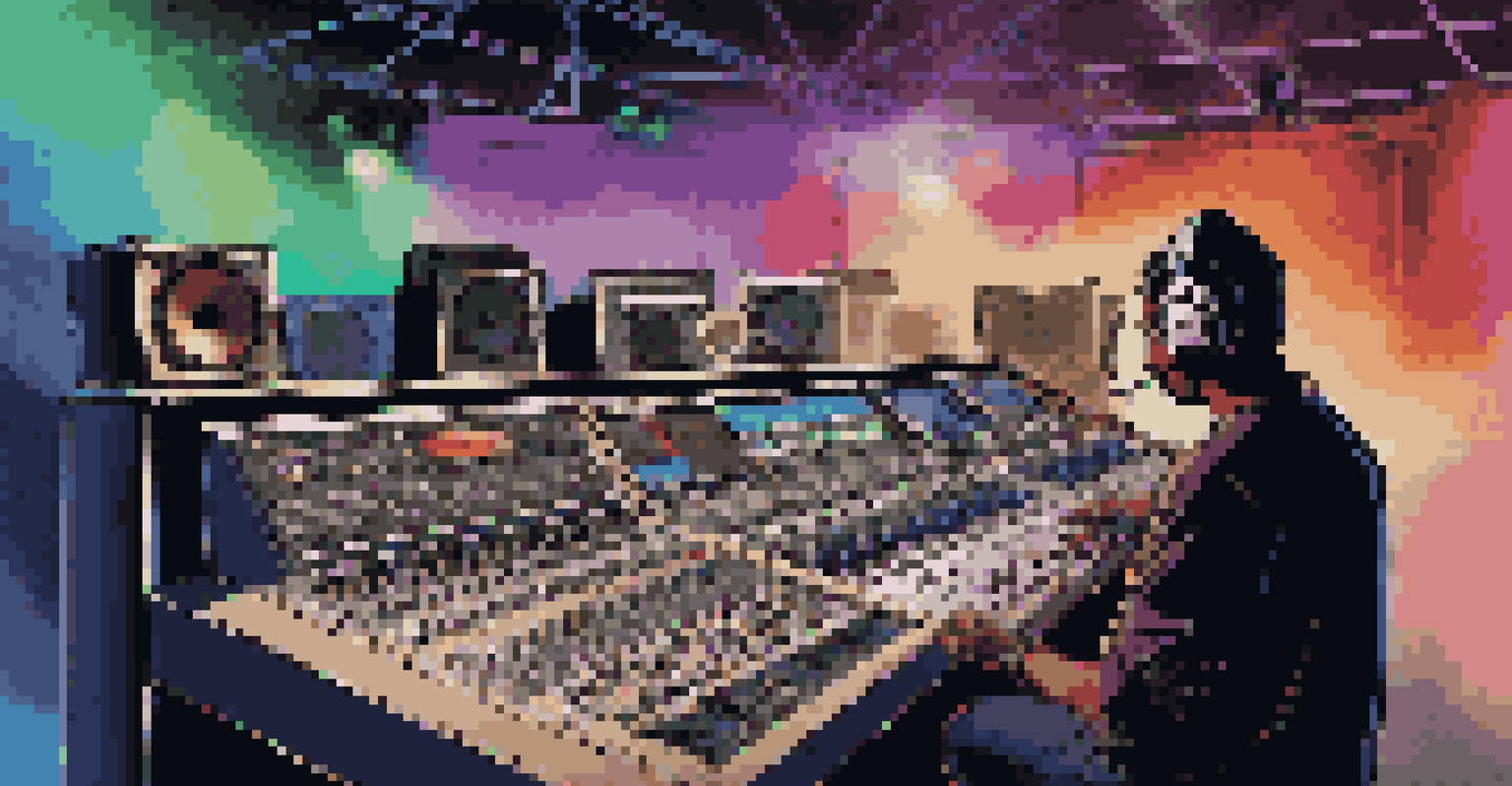Exploring Surround Sound Techniques for Live Performances

Understanding Surround Sound Basics for Live Events
Surround sound has revolutionized the way we experience audio, especially in live performances. It creates an immersive environment by using multiple audio channels, allowing sound to come from various directions. This technique not only elevates the listening experience but also engages the audience on a deeper emotional level.
Music is the shorthand of emotion.
In live settings, surround sound often involves a combination of speakers positioned around the venue. This setup ensures that every audience member, no matter where they are seated, can enjoy a balanced and rich soundscape. Think of it like a surround-sound movie experience, where the action and music envelop you from all sides.
Understanding these basics is crucial for performers and sound engineers alike, as it sets the foundation for implementing more advanced techniques. With the right knowledge, they can create a memorable auditory experience that resonates long after the performance ends.
The Role of Technology in Surround Sound Design
Technology plays a pivotal role in the design and execution of surround sound for live performances. Digital audio workstations (DAWs) and advanced sound mixers allow artists to manipulate audio in real-time, creating dynamic soundscapes that adapt to the live setting. This flexibility is key to delivering a seamless auditory experience.

Additionally, innovations in wireless technology have made it easier to set up surround sound systems without being tethered to bulky equipment. This not only enhances mobility during performances but also allows for creative configurations of speakers that can be tailored to each venue's unique acoustics.
Surround Sound Enhances Live Events
Utilizing multiple audio channels creates an immersive experience that engages audiences emotionally during live performances.
As technology continues to evolve, so do the possibilities for live sound design. Artists are now able to experiment with spatial audio effects that can transport audiences to different sonic landscapes, making each performance a unique journey.
Creating Spatial Awareness with Sound Placement
One of the most powerful aspects of surround sound is its ability to create spatial awareness. By strategically placing sound sources around the audience, performers can manipulate how they perceive the music. For instance, placing vocals in front and instruments around can create a sense of depth that captivates listeners.
The ear is the avenue to the heart.
This spatial arrangement can also enhance storytelling in live performances. For example, during a dramatic moment, sound might be directed from above, simulating a rain effect, while softer sounds emanate from behind, adding layers to the narrative. This technique draws the audience in, making them feel like active participants in the experience.
Ultimately, sound placement is an art form in itself. It requires careful planning and execution to ensure that every element complements the overall performance, transforming a simple concert into an unforgettable spectacle.
Incorporating Audience Interaction with Surround Sound
Engaging the audience is a crucial component of any live performance, and surround sound can take this interaction to new heights. By inviting audience members to participate in the sound experience—like clapping or singing along—performers can create a shared atmosphere that enhances the overall energy of the show.
Moreover, technology now allows for real-time audience feedback to influence the sound. For instance, using apps that let attendees vote on which song or sound effect to play next creates a dynamic environment where everyone feels involved. This not only fosters a sense of community but also keeps the performance fresh and spontaneous.
Technology Transforms Sound Design
Advancements in audio technology and wireless setups allow for dynamic and tailored soundscapes that adapt to each venue.
Incorporating audience interaction through surround sound transforms a traditional concert into a collaborative event, making each show a unique experience that resonates with attendees long after the last note is played.
Challenges in Implementing Surround Sound Live
While the benefits of surround sound are clear, implementing it in live performances does come with its challenges. One major hurdle is the complexity of setup and calibration, which can vary significantly from venue to venue. Ensuring that sound is evenly distributed and balanced across all speakers requires meticulous planning and expertise.
Another challenge is dealing with ambient noise and acoustics of the performance space. Different venues may have unique acoustic properties that can affect how sound travels, potentially leading to undesirable echoes or distortions. Sound engineers must be adept at quickly adjusting settings to accommodate these variables.
Despite these challenges, the rewards of a well-executed surround sound experience can be worth the effort. With careful planning and skilled execution, artists can create a captivating atmosphere that leaves a lasting impression on their audience.
Case Studies: Successful Surround Sound Performances
To illustrate the impact of surround sound, let's look at a few successful performances that have utilized this technique. For instance, the famous band Radiohead has been known to incorporate surround sound into their concerts, creating an immersive experience that enhances their ethereal music. Audience members often describe feeling as if they are enveloped by sound, contributing to a heightened emotional connection.
Another notable case is the experimental group The Flaming Lips, who have used surround sound in their live shows to create unique audio-visual experiences. By integrating sound with stunning visuals, they transport audiences into a surreal world, making each performance feel like a one-of-a-kind journey.
Audience Interaction Elevates Experience
Involving the audience through real-time feedback and participation fosters a unique and collaborative atmosphere at concerts.
These examples demonstrate that when done right, surround sound has the potential to transform a standard live show into an extraordinary event. It highlights the importance of creativity and innovation in the ever-evolving landscape of live music.
The Future of Surround Sound in Live Music
As we look ahead, the future of surround sound in live music seems promising. With advancements in audio technology and an increasing focus on audience experience, we can expect to see even more innovative applications of surround sound techniques. Artists are likely to push boundaries, experimenting with new ways to engage and captivate their audiences.
Moreover, the integration of virtual and augmented reality could further enhance the surround sound experience. Imagine attending a concert where you can interact with the sound environment in real-time, shaping your auditory experience as you move through the space. This could revolutionize how we perceive live music.

Ultimately, the future of surround sound in live performances is about more than just audio; it’s about creating immersive experiences that resonate with audiences on a deeper level. As artists and technicians continue to explore new possibilities, we can look forward to a thrilling evolution in live music.